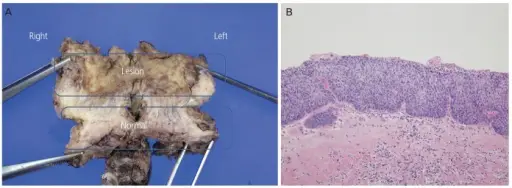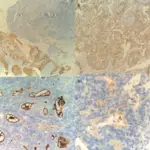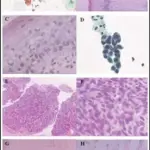Vaginal intraepithelial neoplasia is that when there are abnormal cells in the inner lining of the vagina which is not cancer.
What is the Pathology of Vaginal Intraepithelial Neoplasia?
The pathology of vaginal intraepithelial neoplasia is:
-Etiology: The cause of vaginal intraepithelial neoplasia is human papillomavirus.
-Genes involved: HLA-G.
-Pathogenesis: The sequence of events that lead to vaginal intraepithelial neoplasia is proliferation of atypical cells.
-Morphology: The morphology associated with vaginal intraepithelial neoplasia shows cervical Pap smear, abnormal cytology.
-Histology: The histology associated with vaginal intraepithelial neoplasia shows 3 to 4 times enlarged nuclei, cytopathic changes including distinct cytoplasmic halo and binucleation or multinucleation, immature cytoplasm and greater nuclear pleomorphism.
How does Vaginal Intraepithelial Neoplasia Present?
Patients with vaginal intraepithelial neoplasia typically in females with 22 – 80 years age. The symptoms, features, and clinical findings associated with vaginal intraepithelial neoplasia include postcoital spotting or vaginal discharge, abnormal vaginal bleeding.
How is Vaginal Intraepithelial Neoplasia Diagnosed?
Vaginal intraepithelial neoplasia is diagnosed by coloposcopic assessment and biopsy of the vagina, and physical examination.
How is Vaginal Intraepithelial Neoplasia Treated?
Vaginal intraepithelial neoplasia is treated by surgical excision, CO2 laser therapy, medical therapy using Imiquimod 5% cream, and radiation treatment.
What is the Prognosis of Vaginal Intraepithelial Neoplasia?
The prognosis of vaginal intraepithelial neoplasia is excellent. Women with stage 1 vaginal intraepithelial neoplasia do not need treatment.



